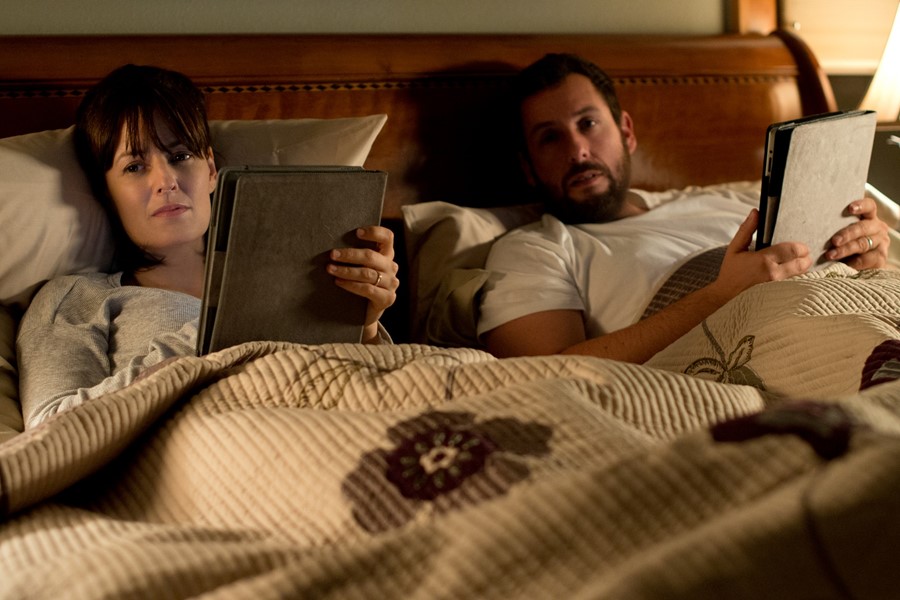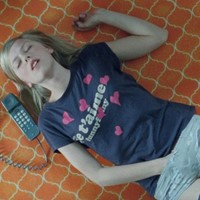Films are harking back to the silent era by telling stories through texts onscreen
Jason Reitman's tale of technological malaise – Men, Women & Children – is a generations-spanning survey of how we interact, sext, and cheat in our relationships. We're celebrating his digital spectacle through in-depth interviews with cast members Ansel Elgort and Judy Greer; Bibio walks us through three melancholic melodies from the soundtrack, and we look at how cinema is slowly reverting to silence on screen.
Let's face it, as technology improves, our lives are becoming more and more like silent movies.
Not that we've started hanging from digital clock faces like we're Harold Lloyd in Safety Last (1923), or letting windows crash around us like we're Buster Keaton in Steamboat Bill Jr (1928). No, tech has allowed us to take on a slightly less entertaining element of silent movies – we've stopped talking to each other.
Couples go to bed with individual iPads and matching headphones. Best friends sit next to each other silently typing out LOL (the irony!) Colleagues message instead of shouting across offices, and, in cities across the world, drones commute with cold faces trying to absorb emotional warmth from the glow of a smart-phone screen. Traditionally, when films have tried to represent the fact that basically everyone in the developed world comes complete with a phone attachment, they've failed miserably. Texting on film has almost always been painful.
It would usually be the same set-up: establishing shot of the character. Reaction shot of them getting a message. Cut to a close up of a boring phone screen with boring writing in a boring font. Cut back to the character being happy, sad, bored, whatever. Cut back to the phone, stay on it while we watch the character slowly type a reply. Repeat until scene – mercifully – ends.
Jesus, we just bored ourselves writing that. So why does it have to slow down film after film after film?
It’s not as though filmmakers haven’t always had amazing examples to inspire them. As far back as All About Lily Chou Chou (2001) onscreen texting was being seamlessly integrated to the plot. It's logical: the story revolves around the South Korean teenagers who, even in 2001, were centring their existence around their phones, covering them in bunny ear cases and individualising them. Lily Chou Chou has frequent examples of text boxes popping up on the corner of the big screen – infinitely preferable to having a phone-insert interrupting the flow of the beautiful cinematography, which mostly featured solo figures in school uniform wandering through tall grass or something.
It should have been instantly influential, starting a revolution in onscreen communication, but it appears a lot of people weren't ready for two and a half hours of almost completely dialogue-free cinema, no matter how pretty it looked, so pretty much no one saw it.
Certainly no one in America, not even on Netflix, where shows as recent as Pretty Little Liars (2012) persevered with long scenes featuring shots of dull metal and plastic boxes/reaction faces.
It's a problem so institutionalised, even a film as dynamic as Scott Pilgrim Vs The World (2010) – released in the same year as The Social Network (which made computer screens compelling) – resorted to insert shots of mobile typing. It's ultra embarrassing when you consider Hollyoaks was using onscreen text bubbles in 2010.
Thankfully, things are changing – and rapidly. Film execs might not watch Hollyoaks, but they certainly turned on their tellies to see their mates Benedict Cumberbatch and Kevin Spacey in shows such as Sherlock and House Of Cards (both of which use onscreen text bubbles in clever, plot-driving ways) whose influence means the trope is finally starting to fill cinema screens.
Non-Stop (featuring Liam Neeson developing an RSI as he deals with a text-happy terrorist) even builds an action movie around it, with onscreen text bubbles flying faster than bullets. The Fault In Their Stars (whose texts come in a stylish font suited to indie comic books), makes texting romantic; The Fifth Estate adds political edge.
In China, things have gone a bit too far. Not satisfied with the rate movies are evolving to incorporate texting into the narrative, they’ve chosen to invent danmu. You might not have heard of danmu, but you’d better pray it doesn’t come here. It basically allows cinema-goers to send texts that instantly appear on the big screen of WHATEVER FILM YOU’RE WATCHING. You know annoying idiots who shout out jokes whilst distracting you with their stupid glowing phone screens? Yeah, that – except encouraged by cinema owners.
Anyway, back to films we actually want to see texts appearing on. The trope reaches its peak with the plot device of communication via tech devices being as integral to story as it is its delivery in Men, Women & Children. The whole film revolves around digital communication, and overlays around 70% of the script on the screen via text messages, Facebook posts, and even Tumblr blogs. It’s all beautifully designed, making that IKEA catalogue scene in Fight Club look like Legend Of Zelda. It’s the closest a full-length film has come to truly reflecting our IRL, creating compelling drama completely dependent on text message communication. It’s added to the canon of text on screen in a novel way, and it’s a pretty essential watch.
That said, Men, Women & Children does still contain traditional dialogue scenes. We’re still waiting for the full-length version of Noah, the short film screened at the Toronto International Film Festival, which tells its whole story via a teen’s computer screen.
Return to the roots of cinema with something as representative as that, and maybe we'd finally have something to talk about as we make our way out of the multiplex.
Men, Women & Children is out in cinemas December 5



